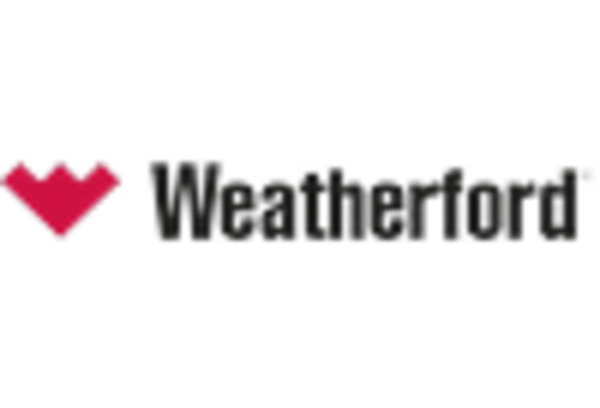Rising Environmental Awareness
The well test market is increasingly shaped by rising environmental awareness among stakeholders, including consumers, investors, and regulatory bodies. As the focus on sustainable practices intensifies, companies are compelled to adopt environmentally friendly testing methods. This shift is evident in the growing preference for non-invasive testing techniques and the implementation of best practices to minimize ecological impact. In 2025, it is anticipated that approximately 40% of well tests will incorporate sustainable practices, reflecting a significant trend within the well test market. This emphasis on environmental responsibility not only enhances corporate reputation but also aligns with broader societal expectations.
Regulatory Changes and Compliance
The well test market is subject to evolving regulatory changes that necessitate compliance from industry players. In the US, regulatory bodies are increasingly implementing stringent guidelines to ensure safety and environmental protection in well testing operations. These regulations often require more comprehensive testing protocols and reporting standards, which can drive up operational costs. However, compliance also presents opportunities for growth within the well test market, as companies invest in technologies and processes that meet these new standards. In 2025, it is projected that compliance-related expenditures could account for up to 15% of total operational costs in the sector.
Advancements in Testing Technologies
The well test market is significantly influenced by advancements in testing technologies, which enhance the accuracy and efficiency of well evaluations. Innovations such as real-time data analytics, automated testing equipment, and advanced simulation software are transforming the landscape of well testing. These technologies enable operators to conduct more precise assessments, leading to improved decision-making and resource management. In 2025, it is estimated that the adoption of these technologies could increase testing efficiency by up to 30%, thereby driving growth in the well test market. As companies seek to optimize their operations, the integration of cutting-edge technologies becomes a critical factor in maintaining competitiveness.
Increased Demand for Energy Resources
The well test market is experiencing heightened demand for energy resources, driven by the growing need for reliable and efficient energy production. As the US economy continues to expand, the energy sector is under pressure to meet rising consumption levels. This demand is reflected in the increasing number of well tests conducted to optimize production and ensure resource sustainability. In 2025, the US energy consumption is projected to rise by approximately 2.5%, necessitating more rigorous testing and evaluation of existing wells. Consequently, the well test market is likely to see a surge in investments aimed at enhancing testing technologies and methodologies to maximize output and efficiency.
Investment in Oil and Gas Exploration
The well test market is bolstered by increased investment in oil and gas exploration activities. As energy prices stabilize, companies are more willing to allocate resources towards exploring new reserves and optimizing existing wells. This trend is particularly evident in regions with untapped potential, where well testing plays a crucial role in assessing viability and productivity. In 2025, it is expected that exploration investments will rise by approximately 10%, further stimulating demand for well testing services. The well test market stands to benefit from this influx of capital, as operators seek to enhance their understanding of subsurface conditions and improve extraction techniques.

















Leave a Comment